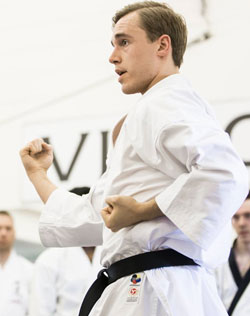You should consider these benefits when looking for a new sewing machine. These include ease of use, speed, and decorative stitches.
Serger machines
Sewing machines can be used for more than just sewing clothes. They are versatile and easy-to-use. If you want to get the most out of your machine, it’s important to know how to operate it properly.
A serger is a powerful machine. This is something you should know right away. It can make more than a thousand stitches in a minute, which is much faster than most sewing machines. You can use it to make rolled hems, chain stitched stitches, and even cover stitches.
A serger is also easier to use than a regular machine. A serger can be used to achieve a professional finish without the need to manually trim the seam allowance.
There are several serger models on the market, but you’ll want to make sure you’re getting a quality one. Multiple threads are a hallmark of the best sergers. This ensures that the stitch looks professional and is smooth. Check out for the best embroidery machine for beginners.
A machine with a differential feed is another option. A differential feed allows for you to adjust the fabric feed to achieve the best stitch possible for knits and woven fabrics.
Finally, you’ll need to consider your budget. A good serger can be purchased for as low as $200. However, you will need to spend more money to get more advanced features.
For instance, the Singer ProFinish 14CG754 Serger is affordable, but it’s not very high-end. A higher-end model might have a retractable knife and multiple threads.
To create professional-looking garments, however, you don’t need a serger. Although it’s easier to sew on a machine, you still need to use a bobbin and a sewing needle.
Embroidery and cross-stitch are only achievable by hand
If you are thinking of trying embroidery or cross-stitch for your next project, the best place to begin is with some simple designs. This will give you the necessary practice to improve your stitching skills and develop your embroidery talents.
There are many options to achieve the results that you desire. First, choose the right fabric. It should complement the item you are embroidering. You also need to find a hoop or thimble. The latter can make the job easier.
Next, choose a thread. A good choice would be wool, cotton, or silk. You should also buy a needle threader.
Embroidery and cross-stitch are enjoyable and rewarding crafts. These are great for making gifts and decorating your home. These techniques are not recommended for children. Those who have limited vision may also have difficulty with them.
Names for embroidery stitches include lazy daisy and satin. While some of them are simple, others are quite challenging. Beginners should try hand embroidery first.
Some basic stitches include the cross stitch, chain stitch, and satin stitch. Each stitch has its own look. When working together, they make up an embroidery pattern.
Cross-stitch is a popular choice for creating coasters, table mats, and pillowstops. It’s also used for greeting cards. As a result, there are numerous cross-stitch patterns available online.
Machine-driven embroidery is also a great option for creating beautiful projects. There are many types of sewing machines that can be used with different materials. Although it is more expensive and less precise to use a machine to make your embroidery, it can be more consistent and allow you to produce your project more quickly.
They can create decorative stitches
Adding character to your project with decorative stitches on your sewing machine is a great way to do this. They can be used to add a touch of class and elegance to clothing or household items. They can be used on everything, from tea towels to quilting projects.
There are two types of decorative stitching that you can do with a sewing machine. The first is a set of single stitches that are repeated in a pattern. These are called open decorative stitches.
Another type is a set of stitches that are tightly made and used to join two fabrics. Usually, this is a zig zag stitch.
These stitches are often used on applique projects. It hides the seam between applique and background fabric. For instance, you can sew a patch on denim.
You will need to follow a guideline when using a decorative stitch on a sewing machine. The stitches can distort if you pull too fast. This can make them difficult to remove after you’ve finished.
Besides the guideline, you’ll also need to choose a good needle for your fabric. For decorative stitching, it is best to use a lower tension thread.
You’ll want to test your new machine on a sample of fabric. Make sure to check the settings, as they can have an impact on the size and intensity of the stitch.
If you’re just starting out with decorative stitches, you might want to pick a simple project. Once you’ve mastered a few stitches, you can start to experiment with different widths and lengths. This will allow you to see the effects of different options on your work’s overall appearance.
Remember to test out your decorative stitching on a sample. This will ensure that you have the best settings for your new stitch.
They are faster than regular sewing machines
When it comes to stitching, some people choose to hand sew, while others prefer to buy a sewing machine. Sewing machines are a lot faster than sewing by hand, but they still take time to do the job.
The best sewing machines are designed to handle a wide range of stitches. They are also designed to make the task easier. The average domestic sewing machine can produce between 750 and 1000 stitches per minute. This is still more than enough for the average home sewer.
A computerized sewing machine is a good choice for advanced sewers. This machine is ideal for large-scale projects, such as quilting and embroidery. However, it can be overwhelming for the uninitiated.
A serger is a great way to maximize the performance of your machine. Not only will it make your sewing tasks easier, but it will also help you produce a neater finish.
A serger is an upgraded version to the standard sewing machine. It uses multiple spools of thread to loop stitches. A sewing machine only needs one bobbin, while a serger uses three to five bobbins.
An overlock foot attachment can also be purchased for a standard sewing machine. The overlock foot, also called an overcasting foot will wrap the thread around fabric’s edge. In addition to its obvious usage with piping and finishing edges, it can be used to create a beautiful zig zag stitch.
While a serger is not a substitute for a sewing machine, it is a good option for people who have a small sewing business. Although it can’t produce a long-lasting stitch, it will certainly speed up your production.
They can handle a variety in fabric weights
Depending on your specific needs, you may need a sewing machine that can handle a variety of fabric weights. These machines come with practical features that make sewing easier.
Some machines also have an accessory kit and a scrap catcher. Other convenience features include an adjustable base, an extension table, and a carrying case.
For heavy-duty sewing applications, you need a machine that can withstand continuous use. A warranty is also an important feature to consider when purchasing a sewing machine.
Some of the most important features to consider are the stitch type, speed, and thickness of the threads. A machine that can handle the material’s weight and has the right stitch length and thickness is essential.
If you plan to make a large amount of sewing, a long-arm machine is a great choice. They can be used to sew several panels together or to attach emblems to garments.
Industrial sewing machines are usually made of strong materials. These machines are used to create thick clothing. They are however difficult to use. The parts are often large and bulky.
A touch screen sewing machine is a good choice. An LCD screen allows you to easily change settings. These machines often have Wi-Fi capabilities. Another convenient feature is the ability to download designs directly from the internet.
There are three main types. Each type is appropriate for a different level of sewing. While basic machines offer a limited number of pre-built stitches, computerized models can have hundreds of built-in stitches.
You can take a class or contact a specialist to find out which sewing machine is right for you.


